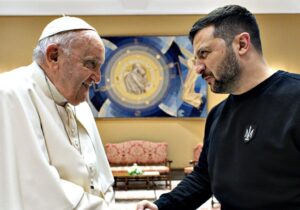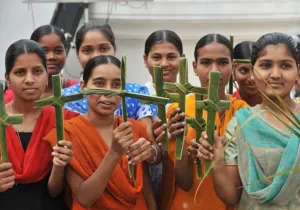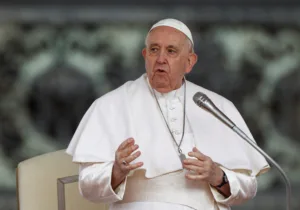A concordat is a bilateral treaty between the Holy See and a civil commonwealth, and has historically served as a major diplomatic instrument of the Roman Catholic Church. Exempted from canon law, and exploited by fascist dictators as a source of recognition and legitimation, concordats are usually concerned with clarifying the legal and institutional space within which the Church may carry out her ministries of Word and Sacrament. While European and Latin American countries dominate concordatorial engagement, they have been concluded with both national and sub-national units the world over, with an agreement announced with the People’s Republic of China on September 22, 2018.
The text and therefore the terms of the “Provisional Agreement between the Holy See and China” have not been made public. All that either side has said is that it somehow relates to the “nomination of bishops,” which can then potentially serve to inaugurate more dialogue and improved relations. Assuming continued silence on the part of Beijing, the public will not be privy to the treaty until 2020, when volume 110 of the Acts of the Apostolic See—covering all official engagements from 2018—is due for publication. Meanwhile, its probable contents can only be surmised through a simultaneous appreciation of the situation of the Catholic Church in China combined with an understanding of some of the enduring considerations of papal diplomacy.
The overall religious situation in Red China, to begin with, is appalling. Only Buddhism, Taoism, Islam, Catholicism, and Protestantism are permitted, and houses of worship within those five approved theological groups—coded by the regime as “patriotic religious associations”—must continually submit to draconian licensing systems in order to practice the mere rudiments of their faith. All other votaries suffer violent and perhaps increasing persecution. The subjection of Tibet and the oppression of the Falun Gong continue. In Xinjiang, an enormous operation of intimidation and forced reeducation is currently underway against the Uighur, Kazakh, and other Muslim minorities, while reports have increased of large-scale torture, disappearance, and organ extraction from various groups of imprisoned dissidents and objectors.
Chinese Catholicism, for its part, frequently shares in these larger tribulations, but adds to them unique disorders of its own. Relying upon the State Department’s 2018 International Religious Freedom Report, there are perhaps ten to twelve million Chinese Catholics, about six million of whom worship within the approved Chinese Catholic Patriotic Association. Sixty-one bishops are officially reported as controlled by the Chinese state, with 37 independent. The resulting institutional confusion deeply endangers the Chinese Church, however defined. Bishops Vincenzo Guo Xijn of Fujian and Peter Shao Zhumin of Wenzhou, for example, were in communion with Rome but unrecognized by the authorities, who arrested them in March and November 2018, respectively.
The Roman Catholic Church, for its part, may be shepherded by the Pope and administered by the Curia, but it is governed by bishops; the theologically invalid and institutionally precarious situation whereby both Rome and Beijing have been recognizing competing bishops and the sustained repression of Chinese religion more generally were probably central to papal thinking in the conclusion of the September agreement. The concordat with Mussolini in 1929 created Vatican City as an independent sovereign state; the concordat with Hitler four years later may have saved the Catholic Church in Germany, and numerous other concordats with countries of the former Soviet-bloc have served to deepen their Christian Democratic affiliations. Catholic signatory Msgr. Antoine Camilleri of Malta is intimately aware of this diplomatic history as well as of the grim Chinese realities surveyed above; on the basis of these bilateral understandings, a highly tentative exposition of the likely contents of the concordat with China may now be attempted.
To begin with, the modest title “provisional agreement” combined with a highly laconic Vatican communiqué appears intended to escape attention, given that announcing the conclusion of a “concordat” would have certainly elicited both more and more lurid headlines. The Holy See is by nature exceedingly solicitous of how any move from the top might influence the lived experience of Chinese Catholics, and although the agreement is truly historic—there having previously been no official relations—the Holy See has clearly determined to publicly downplay its significance. Yet the fact that a signing ceremony was held in Beijing suggests not only genuine commitment but also, perhaps, Roman as opposed to Chinese instigation. As far as the treaty contents, they can at this point only be guessed at, as the same communiqué from Vatican News states only that “it concerns the nomination of bishops.” At a minimum, the Catholic bishops not currently controlled by the Chinese government must have been granted de facto exemption from arrest if not official recognition, a courtesy Beijing would be very keen to continue to conceal. What position the Holy See took or assurances received regarding the state bishops must be highly speculative, but the answer may revolve around the word nomination. Bishops are not merely nominated, but also en route ordained and consecrated. This commentator might tentatively float the theory that the Holy See has secured the sole prerogative over the ordination and consecration of Chinese priests, with Beijing retaining the right to nominate them from within the Chinese portion of the global magisterium. The Chinese government if it so chose could then pretend that it in fact conceded nothing at all, as strictly sacramental functions obviously lie outside the remit of state policy and state atheism.
The truth of the matter, once again, shall be forthcoming in the official Vatican record. The truth as a whole, however, is “that the Holy Ghost witnesseth in every city” (Acts 20:23). Such catholicity verily extends to boastful citadels of historical materialism.
Mark R. Royce, PhD, is a political scientist and international relations scholar and author of The Political Theology of European Integration: Comparing the Influence of Religious Histories on European Policies (Palgrave Macmillan, 2017). A founder of the Alexander Hamilton Society, he was awarded (Oct. 10, 2017) an Associate Provost commendation for outstanding undergraduate teaching at George Mason University, and currently instructs there and at Northern Virginia Community College, Annandale.
Photo Credit: Pixabay






 Sponsor a student for Christianity & National Security 2024
Sponsor a student for Christianity & National Security 2024